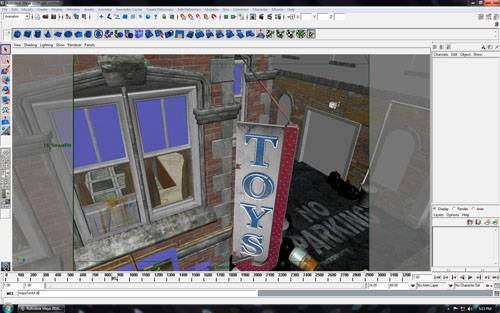- Qualcomm Launches Snapdragon 4 Gen 2 Mobile Platform
- AMD Launches Ryzen PRO 7000 Series Mobile & Desktop Platform
- Intel Launches Sleek Single-Slot Arc Pro A60 Workstation Graphics Card
- NVIDIA Announces Latest Ada Lovelace Additions: GeForce RTX 4060 Ti & RTX 4060
- Maxon Redshift With AMD Radeon GPU Rendering Support Now Available
Intel Core i7-4770K Quad-Core Processor Review

Intel’s latest processor architecture brings a lot to the table, with the usual suspects dominating the feature’s-list: improved CPU and GPU performance, better power-efficiency, and new instruction sets. We’re taking a look at the desktop line’s highest-end offering here, so let’s see how it stacks up against the last-gen’s champ.
Page 3 – Workstation: Autodesk 3ds Max & Maya
If there’s design work that needs to be done, then Autodesk is sure to have the right tool. From 3D modeling to architectural design, Autodesk’s selection of highly-regarded tools is almost mind-numbing, and because both its 3ds Max and Maya applications have long been considered to be some of the best in their respective class, we opt to use them for our benchmarking here.
For the sake of all-around testing, we perform most of our benchmarking on this page with the help of SPEC’s SPECapc 3ds Max 2011 and SPECapc Maya 2012, although we also render an in-depth model/scene in the former. We’ll explain each benchmark as we go along.
SPECapc 3ds Max 2011
We kick off our testing with one of the most comprehensive benchmarks in our test suite: SPECapc 3ds Max 2011. The overarching goal of those responsible for producing SPEC’s benchmarks is to deliver as well-rounded a test suite as possible for a respective field, such as 3D rendering and modeling, to produce accurate results that those responsible for purchasing hardware can take advantage of.
Designed to utilize both the CPU and GPU, SPECapc 3ds Max 2011 comes in both free and professional flavors, with the latter being the version we use. It’s comprised of 58 individual tests and takes about 6 hours to complete on a machine equipped with 12GB of RAM and a six-core Intel Core i7-990X.
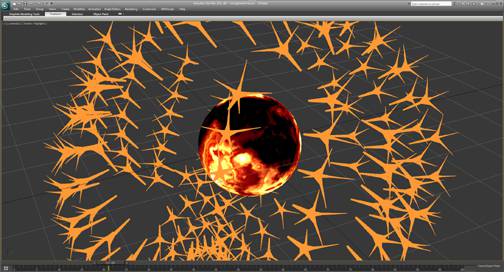
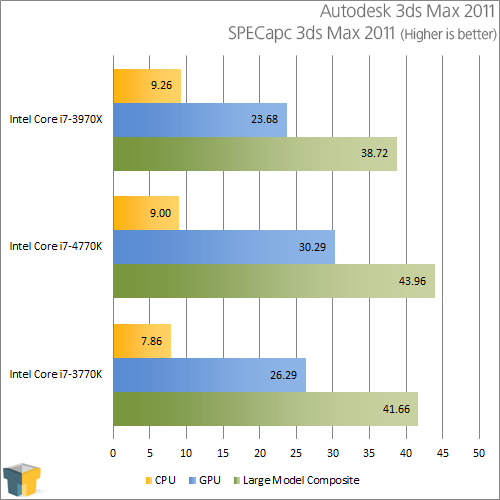
Right off the bat, we have some interesting results to analyze. Being the “enthusiast” part, it’s a little disappointing to see the i7-3960X fall behind where GPU performance is concerned, especially since it’s the only platform that boasts dual x16 PCIe slots when going the multi-GPU route. CPU-wise, it cleans house, as you’d expect given the higher number of cores.
Comparing the 3770K to the 4770K also yields some interesting results. In each test, Intel’s latest performs better, but it really makes that evident in the overall CPU test, which proves it to be 15% faster.
Autodesk 3ds Max 2011 – “Naomi” Render
For our second 3ds Max 2011 test, we render a scene commissioned from Bulgarian artist Nikola Bechev, entitled “Naomi: The Black Pearl”. The woman is comprised of over 7,000 polys with the entire scene totaling just over 106,000 vertices. Three light sources are used, with the entire scene being enhanced with HDR and ray tracing techniques, and subsurface scattering applied to certain objects. The scene is rendered at 1800×3600 as a production release, with HQ detail levels being used all-around.
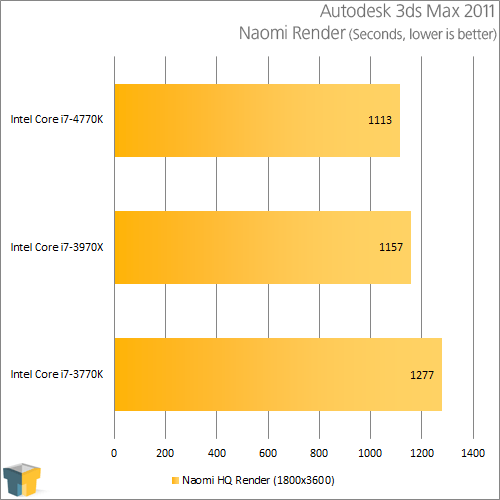
SPECapc 3ds Max showed us that the i7-3960X’s overall brawn could at times help it dominate, but that’s not the case here with our real-world test. Instead, Intel’s i7-4770K is the part that’s dominant; a great showing overall.
SPECapc Maya 2012
Like its 3ds Max 2011 variant, SPECapc Maya 2012 is designed to stress various aspects of the tool, such as rendering with standard and HQ methods, working in wireframe mode and so forth across numerous models and one overarching scene titled “Toy Store”.
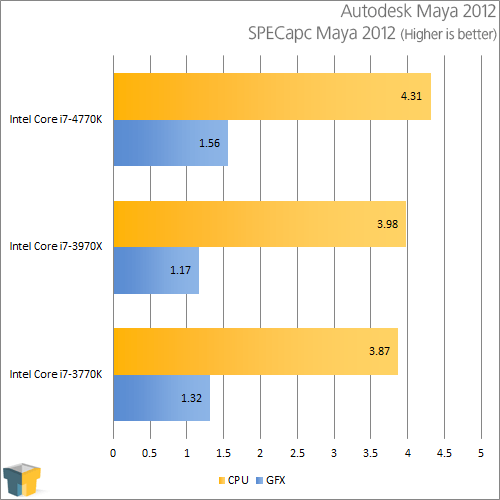
3ds Max user? The i7-3960X looks to be the better option. Maya user? The 4770K gets the nod. Again, we see Intel’s second-generation Core i7-3960X score lower overall in the GPU tests, to a much greater degree than we would have expected. We’ll see later if that actually carries itself over to gaming.
Support our efforts! With ad revenue at an all-time low for written websites, we're relying more than ever on reader support to help us continue putting so much effort into this type of content. You can support us by becoming a Patron, or by using our Amazon shopping affiliate links listed through our articles. Thanks for your support!





